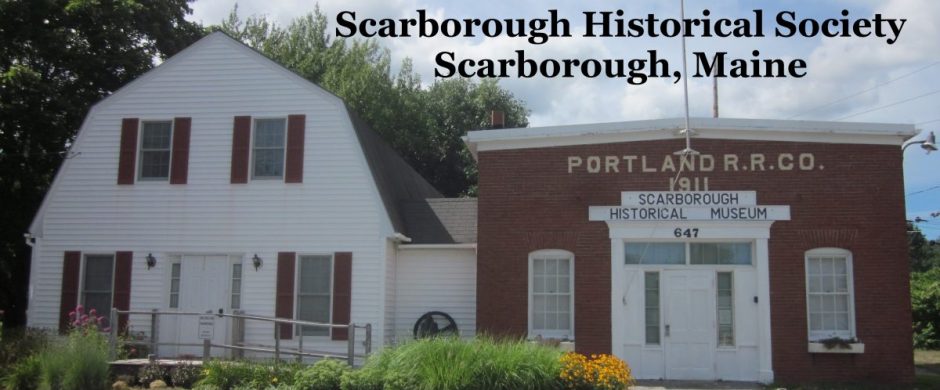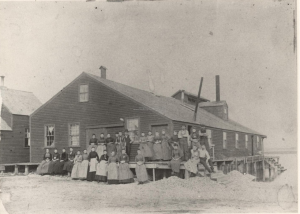Catch of the Day – Part 1
By Bruce Thurlow
Images from Scarborough Historical Society, Bruce Thurlow, Bill Bayley and Don Googins
Scarborough’s coastline, with its marsh, freshwater streams, saltwater rivers, beaches and rocky ledges, has been a site for fisheries, clam digging, lobster fishing and recreational activities for centuries. The Scarborough anchorage at Pine Point has never been home port to any large fishing vessels, but it’s likely that some Scarborough men fished offshore on commercial vessels at the Banks or in recent years, aboard draggers, trawlers or gill-netting vessels, probably out of Portland. Scarborough men have engaged primarily in coastal fishing, particularly clams and lobsters. As a second job, some lobstermen operated fishing party boats summer afternoons, taking groups to catch mackerel, pollack, flounder, cod and haddock along the coast. During winter months these same men often outfitted their boats for dragging hen (sea) clams, scallops or shrimp. Stream and river fishing was recreational, as well as a source of family food.
Clam Harvesting
Although the tools are simple (a metal rake, metal bucket and onion bags), clam digging is hard, backbreaking work with hours dependent on tides and light. The metal rake or “clam hoe” has a short 12”-18” handle, so the digger must bend at the waist often in mud to the knees to dig through the tidal mud flats for clams. There is no quick way to harvest clams; only hand tools or hands are allowed by the state. The process of harvesting clams hasn’t changed over the years, only the tools. Pails or wire baskets have replaced wooden hods or wicker baskets; onion bags have replaced wooden bushel baskets, and outboard motor boats have replaced the rowboats once used to reach the flats across the river. Unchanged are the seasonal weather conditions, mosquitoes, green-headed flies and midges that bother diggers on the flats.
Early settlers used clams for bait, selling their excess to vessels in the Grand Banks fleet and other fishing areas. Clams were shucked (meat cut from the shell), salted, and barreled in fish houses on the flats of Blue Point. Burnham & Morrill was the first company in the United States to commercialize clamming. Its first factory began operations at the end of Seavey’s Landing Road in Blue Point before 1869, using the same canning process as that used for farm produce, such as corn. After 1873 Burnham & Morrill moved to Jones Creek at Pine Point. Clams were shipped to the factory from all over the east coast. In 1883 Burnham & Morrill and other companies canned and shipped 3,000 to 8,000 bushels of clams. Burnham & Morrill moved its clam packing business to Portland in 1897, but continued to employ Pine Point diggers because the firm’s reputation had been based partly on the Scarborough clam. Burnham & Morrill used clams soaked in water because they were lighter in color. Other canneries used “unsoaked” clams, as “soaked” clams lost not only color, but flavor. Pine Point clam diggers sold many bushels of clams to Burnham & Morrill and other dealers as well as to other diggers, but they also kept some for their families.






Pingback: Clamming and Lobstering – Part 2 | Scarborough Historical Society
Pingback: Clamming and Lobstering – Part 3 | Scarborough Historical Society
Pingback: Clamming and Lobstering – Part 4 | Scarborough Historical Society